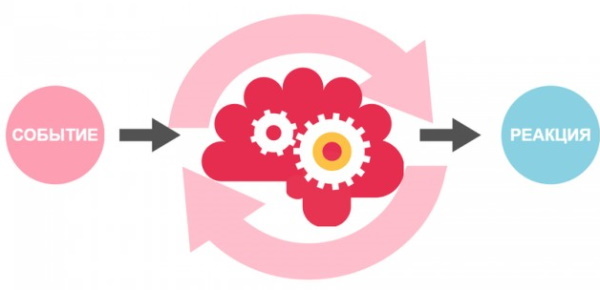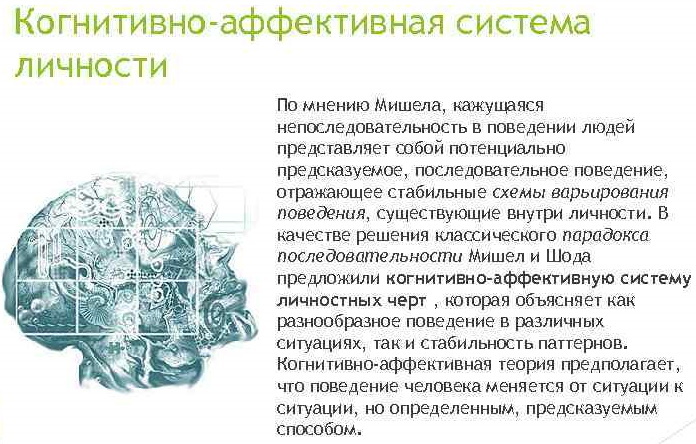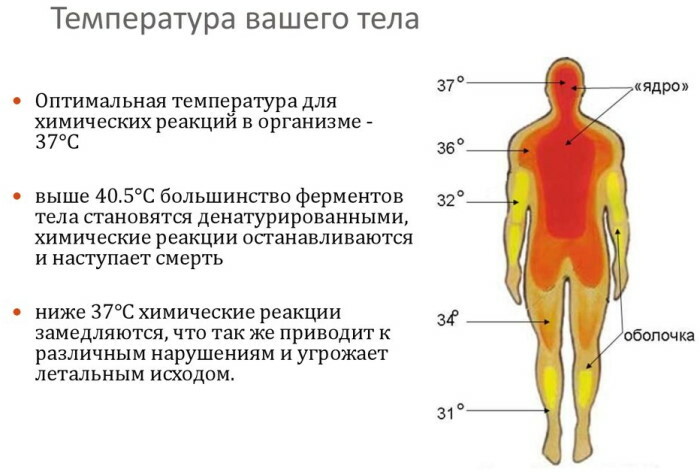Content
- What is it, definition
- Classification
- Characteristics and properties
- Functions and role
- Psychological theories and schools
- Walter Michel theory
- The theory of sequential repetition of patterns
- Patterns Implementation Mechanism Theory
- Video about patterns
A pattern in translation from English means a certain "model", "pattern" or "scheme" of actions. In psychology, it is natural sequence of events, which takes place in the life of an individual, or a whole social group living according to the same rules, subject to a single daily routine, performing the same tasks.
In psychology, patterns are part of the mechanical reactions of human consciousness in response to ordinary life situations. Habitual actions, answers to the most frequently asked questions, the habit of scrolling through the news of social networks before going to bed - these are all pre-formed patterns of behavior and action algorithms.
What is it, definition
A pattern in modern psychology is an ingrained model of human behavior, which has been worked out to automatism, and is also regularly used in everyday life. These patterns of action are found in every behavioral domain.
Daily oral hygiene, strong coffee before going to work, shaking hands with colleagues as a greeting, using a certain method of chopping vegetables for soup. These are patterns that a person needs to accomplish the tasks of daily life. These templates ensure the stable vital activity of the body and prevent overwork of the brain.
The formation of patterns occurs based on a previously established habit. In the structure of the central nervous system, a special program is formed that functions as a single instruction for performing certain actions. During the implementation of a behavioral pattern, a person interacts with the outside world almost automatically.

It is believed that patterns are not just reflex responses to external and internal stimuli. The organizational level of action, which is governed by behavioral patterns, is much higher than acquired instincts.
Classification
A pattern in psychology is a whole complex of behavioral mechanisms inherited by people from generations of ancestors who were forced to daily adapt to the harsh conditions of the world around them. The rational explanation of the stereotyped type of thinking and action boils down to the fact that the brain identifies situations and actions that led to the achievement of a positive result.
For example, if a certain reaction to a particular external factor had a positive effect, then similar manipulations will again lead to success. At this stage, the central nervous system ceases to invent new algorithms of actions, and begins to make up a rational template that has appeared on the basis of the acquired life experience
Each person uses many more standard patterns than they might imagine. The table below describes the main classification types of behavior patterns that allow an individual to experience standard situations in an automatic mode.
| Pattern view | Characteristics of the psychological model |
| Social | Social-type patterns are patterns of behavior that are triggered at the moment of interaction between a person and society. It is fashionable to classify behavioral patterns of this type into the category of general habits, norms and rules that have formed in society. Shaking hands with colleagues upon arrival at work, holding a door in front of another person, letting women forward. These are all social patterns that are common behavior for the majority of educated people living in mutual understanding with other representatives of society. |
| Individual | The behavioral pattern of an individual type is exclusively the personal habits of a particular person. Patterns of this type are formed throughout the life of an individual, but most of them are laid in childhood and adolescence. For example, the manner of eating, the algorithm of actions in the morning when the body is still in a sleepy state, the skills of driving a car. |
| Congenital | Congenital patterns are the behavioral characteristics of each person that are inherited from their ancestors along with genetic information. Reaction to pain syndrome, psychological stability in stressful situations, hard work, tendency to violent acts. These are the behavioral patterns that can be inherited. |
| Acquired | Acquired-type patterns are formed in the mind of a person in the process of his upbringing by his parents, as well as interaction with the outside world. For example, when you get a positive or negative experience while communicating with people. |
| Positive | The advantage of positive patterns is that these patterns help a person accumulate positive experiences by extracting only useful elements from them. Brushing your teeth in the morning and in the evening, performing wet cleaning in the house, smiling when meeting a friend or acquaintance. These are positive patterns that ensure the favorable development of the individual's personality and maintain the health of his body. |
| Negative | Negative patterns are patterns that consist of negative life experiences that have accumulated as a result of unpleasant situations or events. Behavioral algorithms of this type are destructive in nature, prevent a person from fully living and developing. For example, a guy avoids girls because all previous relationships hurt him. Smoking a cigarette in the morning with a cup of coffee on an empty stomach. These are all negative patterns that harm mental and physical health. Getting rid of patterns of this type is carried out with the participation of a psychotherapist. |
| Communicative | Patterns of a communicative type are a specific type of facial expression, a set of gestures, and the intonation of a voice that a person uses when meeting certain people. For example, one communication template is used for colleagues. This is a more businesslike, formal and restrained communication with initially delineated social boundaries. At the moment of meeting friends, completely different communication templates are launched with much fewer restrictions. |
| Thoughtful | Thought patterns play a major role in the construction of all other behavioral patterns. After a positive or negative experience of a person's interaction with the outside world, the centers of the brain are analyzed the situation that occurred, draw generalizing conclusions, form logical conclusions, on the basis of which a new behavioral model. |
| Emotional | The emotional type pattern is a natural reaction of a person in response to a funny joke, good attitude of others, resentment, aggressive behavior of other people. With the help of the templates of this group, the individual's automatic reaction to certain actions taking place in his life is formed. The saturation of emotional patterns largely depends on what moral and ethical values were instilled in a person in childhood by his closest environment. |
| Motor | By the nature of their realization, motor patterns are very close to reflexes and models of instinctive behavior. These are templates that are developed by the centers of the brain in case of emergencies. For example, in the event of a sudden danger when the fight-or-flight mechanism is triggered. Regardless of which model of behavior is chosen by the individual, the motor pattern will automatically start. A person will have to group his body for a fast run or take a position in order to repel an enemy attack. |
| Linguistic | Patterns of this kind are also called linguistic patterns. This is a set of familiar words, phrases, phrases, dialogues and remarks that a person uses in everyday life while communicating at work, with family, with friends. The formation of this pattern is strongly influenced by the environment in which a person grows and develops psychologically. |
| Cultural | Values, morals, role models are cultural patterns that are characteristic of people of large and small social groups. For example, for residents of one tribe or village. World history knows events when, under the influence of psychological manipulations, the leadership of states formed false cultural patterns among the population. For example, Italy, Germany, 30-40s. |
 A pattern in psychology is a regular model of the behavior of one person or social group. Patterns of different spheres of an individual's life can be adjusted or significantly changed as a result of prolonged exposure to stressful situations.
A pattern in psychology is a regular model of the behavior of one person or social group. Patterns of different spheres of an individual's life can be adjusted or significantly changed as a result of prolonged exposure to stressful situations.
Characteristics and properties
Behavioral patterns are the foundation of a person's daily life. The brain of 99% of people is designed in such a way that the same actions performed several times within a short period of time are automatically converted into a logical algorithm.
The person carries out further manipulations unconsciously. The longer the same actions or a certain type of work are performed, the more perfect the technological process becomes. Movement, brought to automatism, increases the functionality of the brain, and also conserves its energy to support other physiological processes in the body.
At the same time, there is an opinion that from a psychological point of view, patterns suppress the personal development of an individual. A person who daily performs similar actions in the automatic mode finds himself in the routine of the same situations. The longer people are in the template framework, the more difficult it is to break the already formed chain of behavioral patterns.
When trying to create a new model of behavior in a particular life situation, to abandon the already formed pattern, the brain will in every possible way oppose this initiative. For example, a person will simply become forgetful, distracted, uncollected.
Functions and role
A pattern in psychology is a kind of behavior that is necessary for every person to lead a fulfilling life.
The following functional purpose of these templates is distinguished:
- increasing the productivity of the centers of the brain, which do not waste energy on the search for new ways to solve a typical life situation;
- improvement of individual skills and abilities associated with the performance of a certain job or other actions;
- ensuring a quick reaction of the body to external and internal stimuli that regularly arise in everyday life;
- the presence of a ready-made solution and an algorithm for actions in stressful conditions (for example, if a person has already faced similar circumstances, then in this case his brain has a ready-made model behavior);
- systematization of positive and negative experience, which is used to build a rational algorithm of actions;
- the formation of generally accepted moral, cultural and ethical values that meet the requirements of the surrounding society;
- influence on the personal development of an individual who most of his time is in conditions of certain patterns of behavior prevailing in society, family, work collective;
- minimizing the risk of making a gross mistake by making the wrong decision (before starting the behavioral pattern, the human brain calculates all possible options, choosing the most profitable models);
- displaying various ways of building logical connections between surrounding objects;
- ensuring effective communication of the individual with other people who are in the same social group with him.


A pattern in psychology is a person's behavioral models that are studied by scientists to improve the quality of predicting further actions of individuals, small, medium and large social groups. Without the initial patterns formed by the brain for quick rational decision-making in difficult situations, a person would spend several hours looking for an algorithm for further manipulations. All human actions are under the total guidance of patterns.
Psychological theories and schools
The most profound study of the importance of patterns in people's lives was carried out by the American professor of social psychology, Dr. Walter Michel.
Walter Michel theory
According to the scientific theory of this specialist, every baby already has basic behavior patterns at the time of its birth. This information is inherited by the newborn along with genes from the parents. As a child grows up, acquired habits, stereotypes and patterns dictated by society are superimposed on his innate algorithms of behavior. The quality of upbringing plays an important role in the formation of new schemes of action in life situations.
All of the above factors form the basis of a person's character in the future. The child's psyche is a very flexible structure. From early childhood, the prerequisites for the formation of basic patterns that persist in the mind of each person throughout his adult life begin to be laid.
If during the period of raising a child, parents closely monitor his behavioral habits, then they can promptly remove negative patterns from the life of a daughter or son. In support of his theory, Dr. Walter Michel developed the Marshmallow Test.
The Marshmallow Experiment, also known as the Marshmallow Test, is performed for children between the ages of 4 and 6. The number of the group is from 5 to 15 children.
Dr. Walter Michel performed a pattern-learning psychological test that looks like this:
- Each child is taken in turn into an empty room, where there is only a chair and a table.
- On the table there is a plate with marshmallows in the amount of 1 pc.
- The leader of the experiment tells the child that if within 15 minutes. he will resist not to eat this delicacy, then he will receive 2 marshmallows as a reward.
- The person conducting the test leaves the room, leaving the child alone with the sweet.
The results of this pattern study were such that 20% of children were able to survive for 15 minutes without eating marshmallows. The rest of the test participants consumed the confection within the first minutes. The experiment of social psychology did not end there.
Walter Michel observed the life of an entire group of children at different stages of the formation of their personality. It turned out that the participants in the experiment who refrained from eating sweets, having received an award of 2 marshmallows for this, achieved much more in life than other children.
With this study, Dr. Walter Michel showed that a sufficiently developed pattern of self-control makes it possible to a person to withstand the temptation, life trials, show willpower and perseverance, in order to end up with a lot more. People with a similar behavioral pattern have strategic planning skills, discard the philosophy of life today.
Parents who want to instill in their child a pattern of self-control should teach him order and discipline from early childhood. For example, brushing your teeth regularly in the morning and evening, talking about the importance of oral hygiene. After completing the game, the child must independently assemble the toys, putting them into a pre-prepared box.
The theory of sequential repetition of patterns
Of particular interest is the theory of sequential repetition of patterns at different stages of an individual's life. There is a natural feature that knowing how a person behaved earlier in certain situations, it is possible to identify his basic behavioral patterns with maximum accuracy.
Before drawing up the appropriate conclusions, psychologists recommend carefully studying the personality of the individual. The simplest example is if a familiar friend easily makes various promises to others, but in practice never fulfills them, then you can be sure that such behavior for a given person is the norm.
Similar situations arise with people who borrow money, but constantly ask for another postponement of the loan repayment period. Patterns developed in childhood are almost impossible to correct. There is a psychological theory for predicting the quality of personal relationships between future spouses.
A woman who is about to get married should pay attention to how her beloved man treats his mother. 2-3 years after marriage, the stage of falling in love is completely completed. At this stage, the behavioral algorithms that the man has formed in relation to his own mother are activated.
Patterns Implementation Mechanism Theory
There is another interesting psychological theory that concerns the mechanism of pattern implementation. It is believed that most people choose partners with similar behaviors for close communication and pleasant pastime.
This choice is made at the subconscious level. This explains the pattern when the same girl constantly finds guys with a reputation for scoundrels. In fact, there is a choice of a loved one, whose personal qualities are most suitable for the implementation of the girl's own patterns.
Similar situations occur with men who are constantly looking for the only and faithful companion in life, but focus on girls with a dubious reputation. After another unsuccessful relationship, the guy is sure that the next lover will not be the same as the previous ones, but again he chooses a girl with negative patterns. This is due to the fact that the behavioral models of loved ones are a mirror image of their positive and negative patterns.
Patterns are behavioral models pre-formed by the human brain, the implementation of which occurs in compliance with a strict algorithm of actions. Allocate negative and positive psychological schemes.
Patterns that have formed in the mind of an individual on the basis of negative practical experience are destructive in nature, reducing the quality of a person's life. Positive patterns are a mechanism for the interaction of a person with the outside world and representatives of society.
Video about patterns
What is a behavior pattern:



